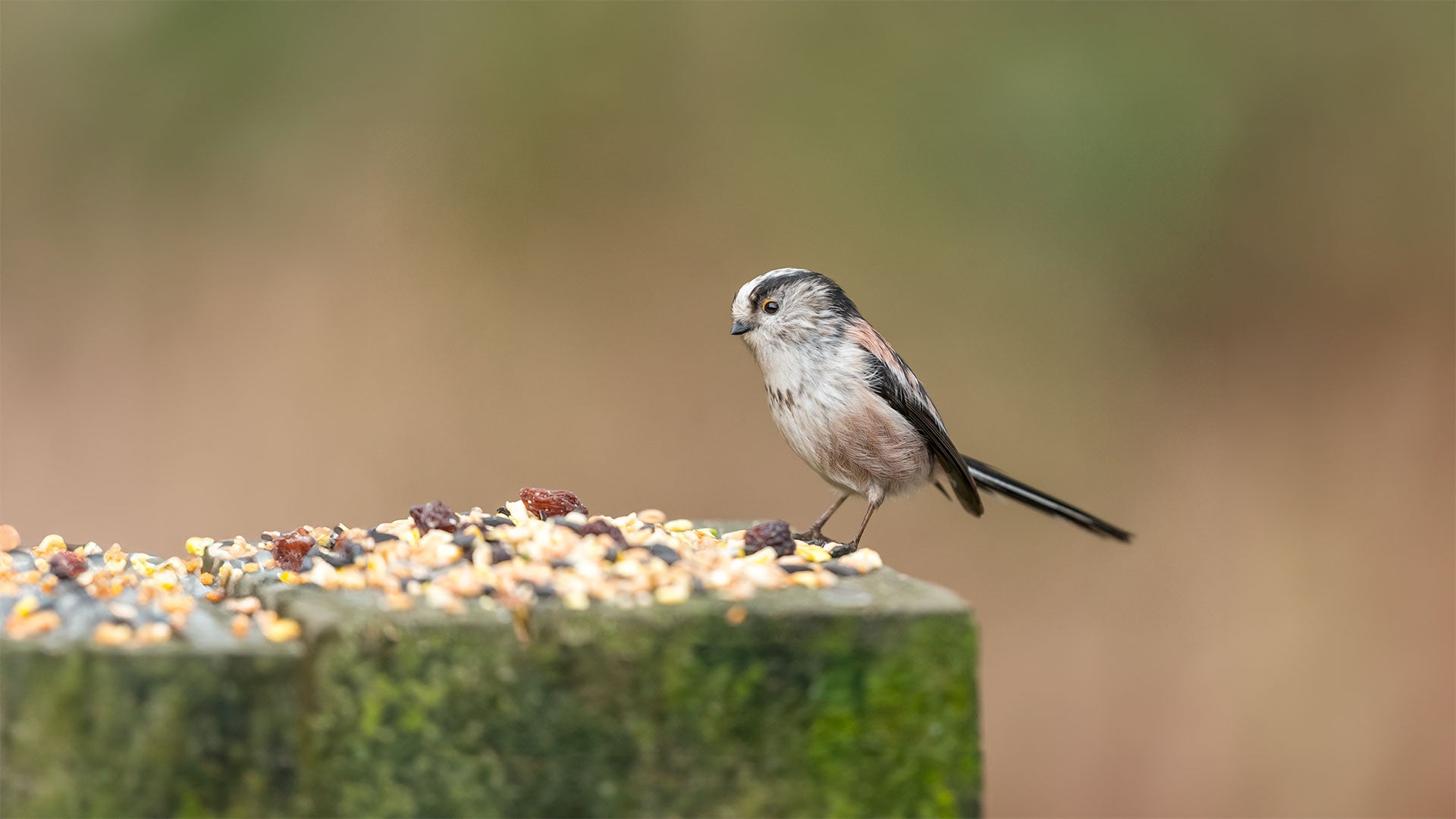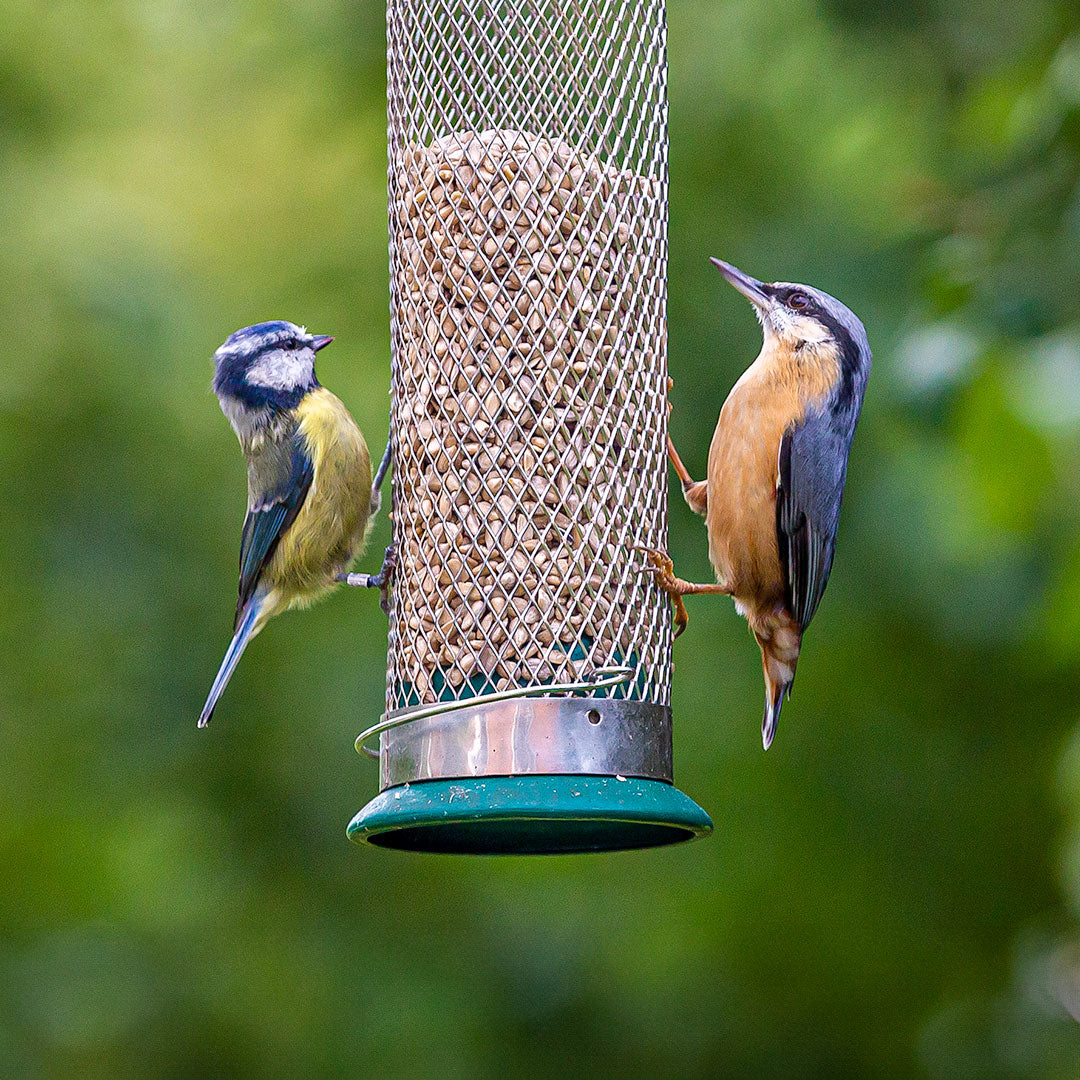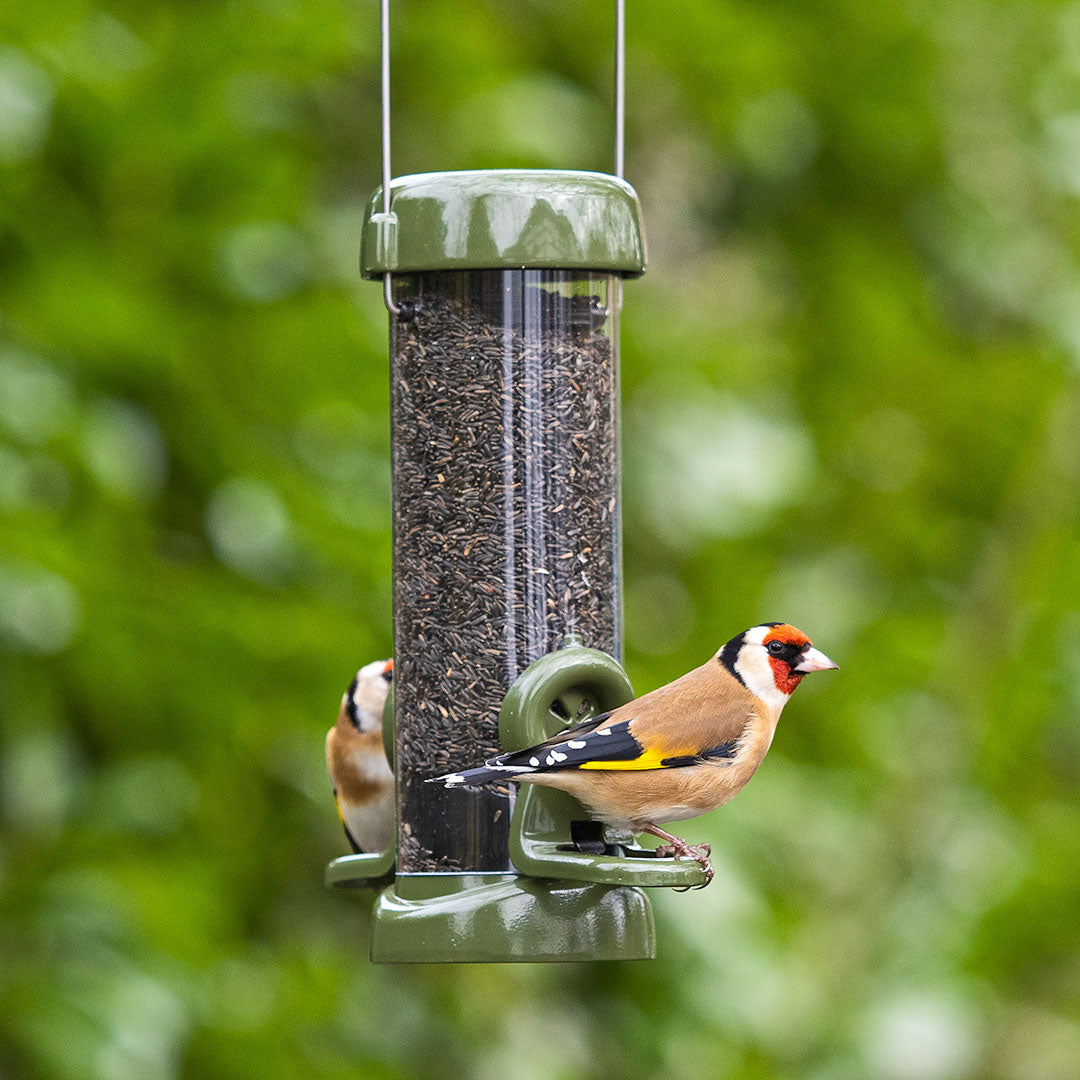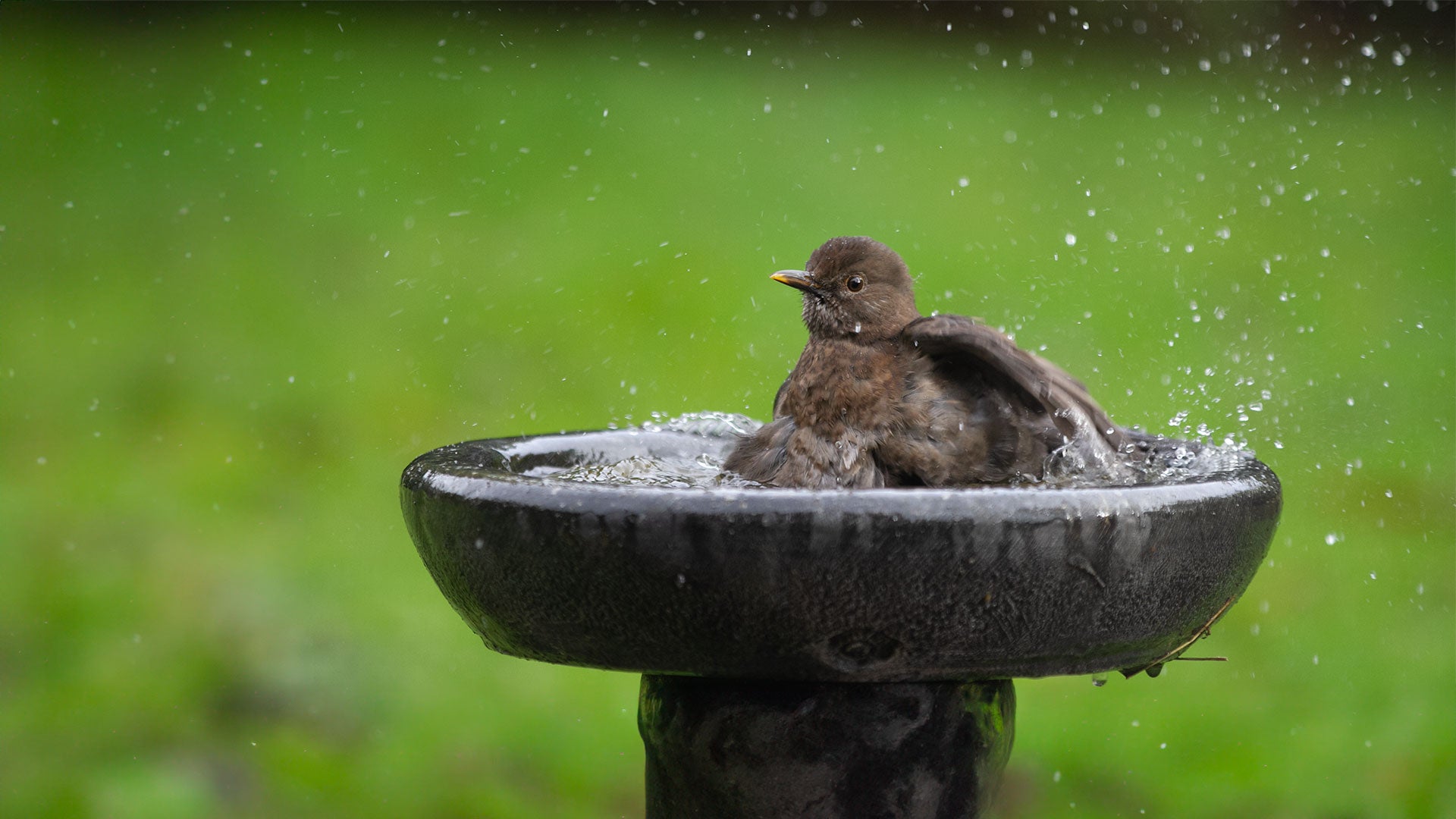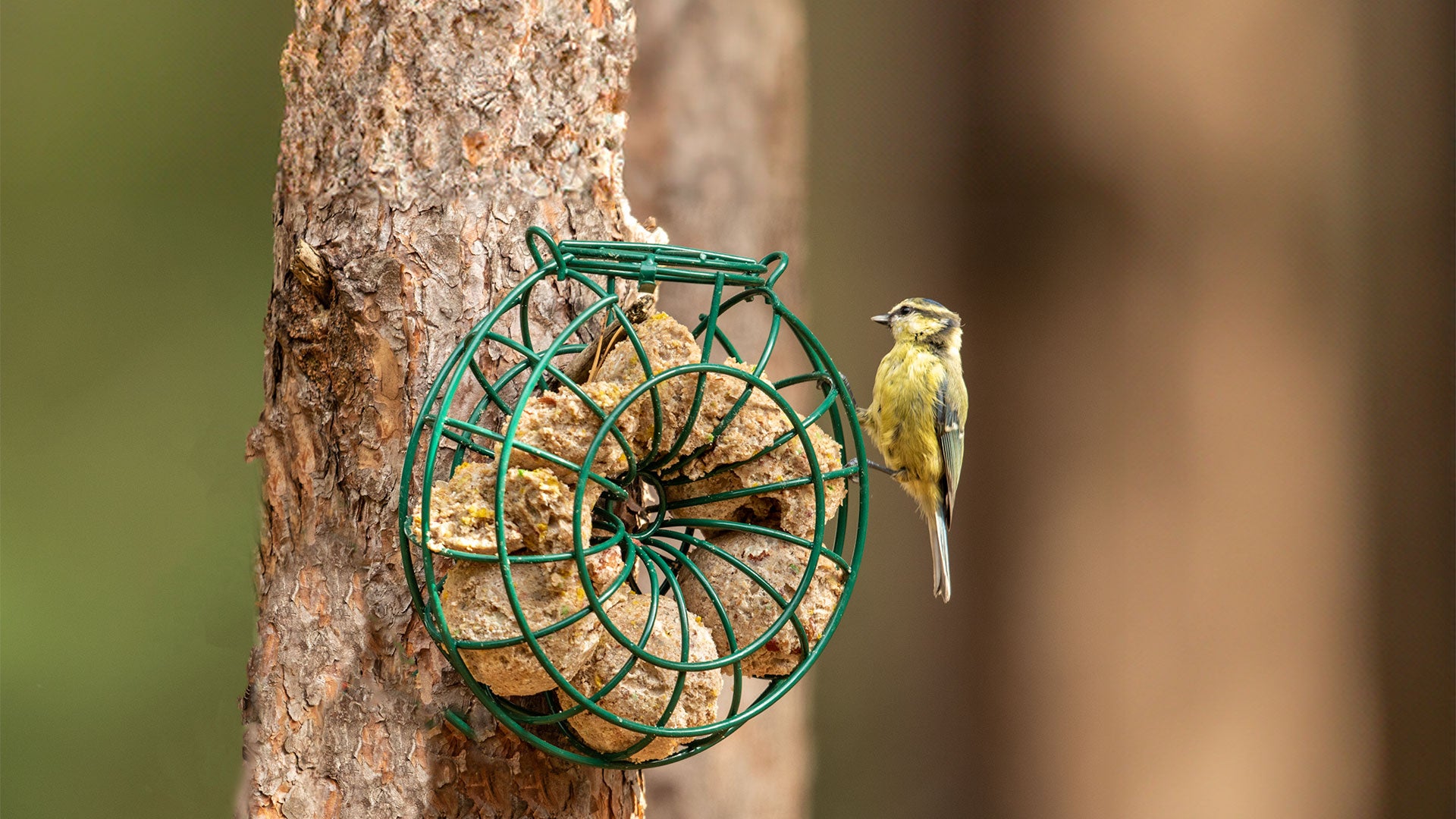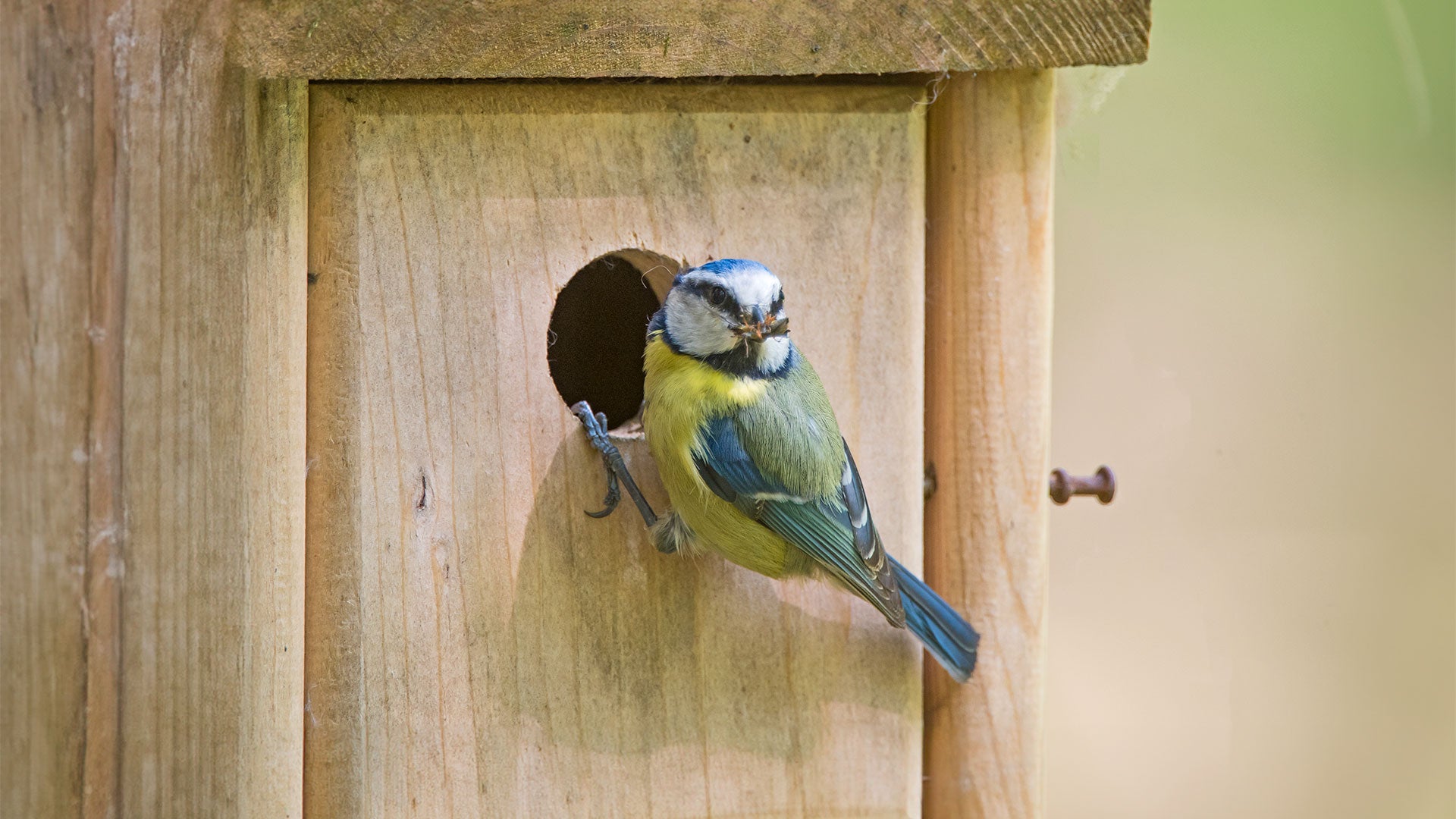A - Z Garden Bird Identification Index
(Coloeus)
Jackdaws are one of the most intelligent and social birds found in UK gardens. Their striking silver-grey neck, bright blue eyes and sharp “chack” call make them instantly recognisable. Whether nesting in chimneys or raiding the bird table, these confident corvids bring character to urban and rural areas alike.
Identification
Length 33cm.
What does a Jackdaw look like?
The Jackdaw is the smallest member of the UK’s crow family, measuring around 33 cm. It is the only black bird with a distinctive grey nape and ear coverts. It also possesses strikingly blue eyes. The rest of its plumage is black with dark grey underparts, giving it a smart two-tone appearance. Juveniles tend to be browner overall.
How big is a Jackdaw?
At 33 cm, Jackdaws are noticeably smaller than Carrion Crows or Rooks but still robust and confident in presence.
Jackdaw call/song - What does a Jackdaw sound like?
They produce a sharp, quick “chack” or “kyow” call. These distinctive calls are often heard in flight or as birds gather in communal roosts.
How long do Jackdaws live for?
Jackdaws typically live around 5 years, though many reach much older. The current record stands at over 18 years.
Diet & Food
What does a Jackdaw eat in the wild?
Jackdaws are highly adaptable omnivores. Their natural diet includes insects, seeds, berries, and other plant material. They are opportunistic and will scavenge from bins, leftover food, and even carrion.
What should you feed Jackdaws in the garden?
Jackdaws are attracted to gardens that offer the following foods:
Ark Songbird Seed Mixes (fed on the ground)
Where should you feed Jackdaws?
Feeder: Though not typical feeder users, Jackdaws will visit hanging suet feeders
Table: Open-topped bird tables work well
Ground: Scattered food in open areas is easily taken
How to attract Jackdaws to your garden?
Provide high-energy foods such as suet and peanuts, ideally placed on a table or ground feeding area. Jackdaws are social birds, so a regular food supply is likely to attract a group.
Habitat
Where do Jackdaws live?
Jackdaws are common throughout most of the UK, apart from the far northwest of Scotland. They thrive in woodlands, parklands, coastal cliffs, farmland, and urban areas — often nesting near human habitation.
Do Jackdaws migrate?
British Jackdaws are generally resident year-round. However, some European birds migrate to the UK in winter.
Where do Jackdaws nest?
Nesting begins in late April. Jackdaws favour cavities — from tree holes to chimneys, ruined buildings, and cliff crevices. They often breed in loose colonies. The nest is built from sticks and lined with wool, hair, or other soft materials. In deep vertical holes, sticks may be absent as they wedge materials into place.
Jackdaw nesting habits
Females lay 4–6 pale blue eggs (occasionally up to 9), marked with black, brown, or grey. The female incubates for 17 days, and both parents feed the young, which fledge at around 28–32 days.
Do Jackdaws return to the same nest?
They often reuse the same nesting site, especially chimneys or favoured hollows, returning year after year if undisturbed.
Where do Jackdaws sleep?
Jackdaws roost communally in tree cavities, cliffs, or buildings. Roosting flocks gather in the evening and can be seen swirling across the sky in tight flocks.
Where do Jackdaws go in the winter?
UK Jackdaws are largely resident, staying in their breeding territories or nearby throughout the winter. Roosting flocks may shift slightly depending on food availability.
Explore more in our A-Z Bird Identification Guide for detailed profiles of all your garden favourites.
Looking to spot a new visitor on your feeder? Our comprehensive species pages help you recognise and care for every bird that drops in.


